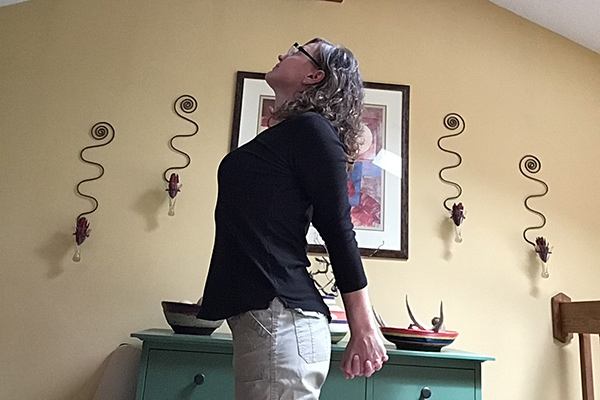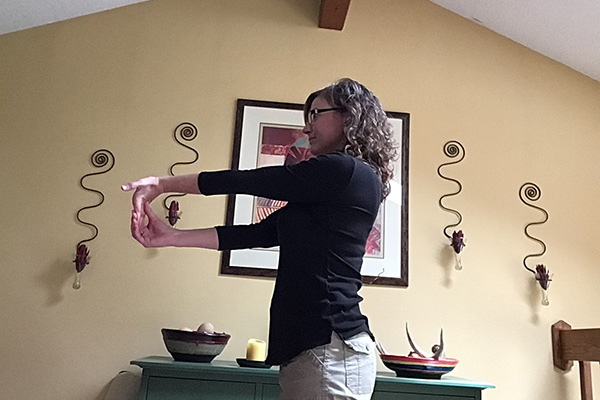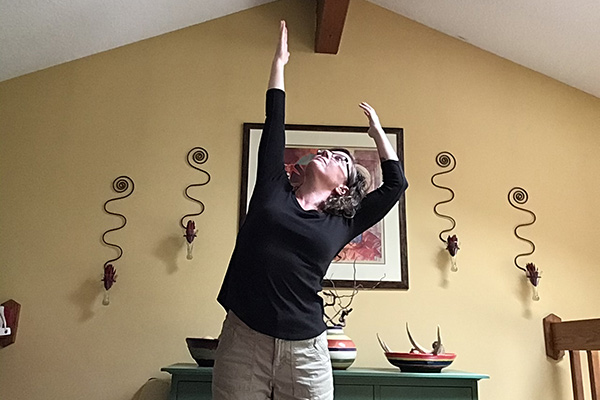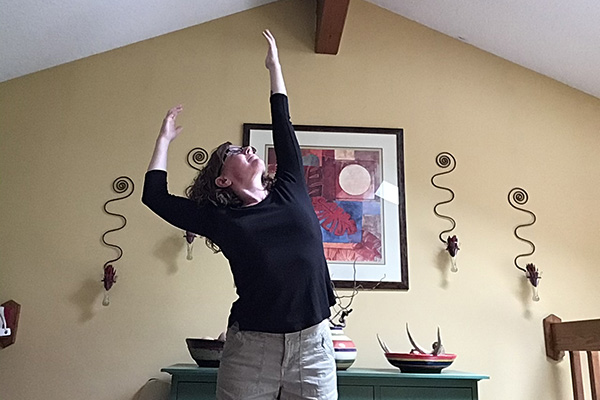
While many have dreamed of having a job working from home, none expected to have it launched on them as it was at the beginning of the COVID-19 pandemic. Even as states begin reopening and businesses start unlocking their doors, many people are continuing to work from home. And many people are starting to feel the “slump.”
Any time change comes unexpectedly, we move forward as best we can, even if it’s not perfect. In this time we’re living in, healthy postural habits, exercise, mental and emotional resilience, and self-discipline might easily have found their way to the back burner. But new bad habits are the easiest to squash. To address some of these challenges, following are three ways you can continue your best self-care while working from home.
Set Up a Designated Work Space
As appealing as they might look, the sofa and bed aren’t optimal work spaces. Although the term laptop might lend itself to thinking it’s OK to work from your lap, doing so is hard on your body. It’s impossible to sit up straight and keep your spine, arms, and head properly aligned when your lap becomes your desk. This can result in neck, shoulder, low-back, and wrist pain. Following are some things to keep in mind when setting up your work space.
- Use an office chair, if possible. Office chairs are designed to be adjusted to fit your individual body type and the way you sit at your desk. Sit all the way back on the chair and use a small pillow or other cushion to support your lower back if the chair doesn’t offer that support. When the pelvis is aligned and supported, the rest of the spine naturally follows.
- Adjust the height of the computer monitor so the top portion of the screen aligns with your eyes. This will support a lifted head rather than looking down or up, which can cause neck tension.
- Invest in a wireless keyboard and mouse. Your arms should be bent at a 90-degree angle. When using a laptop, because the screen and keyboard are directly atop one another, either the monitor will be too low or your arms will be too high without a separate keyboard and mouse.
- Consider a work space that is not in the same area where you relax. It’s important to have time to disconnect, unwind, and separate work life from home life.
Stretch Frequently
For every hour you work at a computer, take a 5- to 10-minute stretch break. When you move your body, you bring fresh oxygen and nutrients to your tissues while also circulating “feel-good” hormones that keep you focused, creative, and joyful. Here are some specific stretches to counteract the bad work ergonomics you might be experiencing from your work-from-home setup.
Stretch it Out
Open the Front of the Body

1. Stand with your feet hip-distance apart. Feel your feet fully planted on the ground beneath the large joint of the big toe, the pinkie toe, and the heel.
2. Interlace your fingers behind your back and straighten the arms by directing your interlaced hands toward the floor (be careful to leave a slight bend in the elbows to avoid hyperextension). Lift through the chest and gently arch your back.
3. Squeeze your shoulder blades toward each other and drop them slightly down the back.
4. Lift the chin and look up to the sky.
5. Take 3–5 deep breaths.
6. Upon release, shake out your hands and arms to increase circulation to the muscles.
Extend the Forearms, Wrists, and Fingers

1. Sit or stand up straight with your shoulders down and relaxed.
2. Reach your right arm out in front of your body, parallel with the ground palm facing up.
3. Use your left hand to gently press open your fingers and palm. You will feel the stretch in your hand and forearm.
4. Hold for 10 seconds, then release.
5. Repeat three times consecutively on the right hand and then the left.
Stretch the Sides of Your Body


1. Stand with your feet hip-distance apart and feet firmly planted on the ground.
2. Gently raise both arms up toward the ceiling.
3. Reach your right hand as high as possible, as if you are trying to touch the ceiling with your right fingertips.
4. Hold for 10 seconds, then release.
5. Reach your left hand as high as possible.
6. Hold for 10 seconds, then release.
7. Repeat three times, alternating from side to side.
8. Inhale as you reach; exhale as you release.
Elevate Your Emotions
One of the positive experiences of being in an office environment is a sense of camaraderie and teamwork. While video conferencing helps negate the sense of isolation, it doesn’t replace the shared energy of person-to-person connection. For most, being in the presence of others helps keep thoughts and emotions elevated.
Meditation is an excellent way to take time out to focus on the positive experiences in your life. It offers time to reframe challenging emotions like fear, loneliness, and anxiety and turn them into gratitude, joy, and creativity. Taking 10 minutes each day (or better yet, once in the morning and once in the evening) to focus your attention on the gifts in your life, such as having a job, being part of a family, feeling healthy, and having food to eat and a roof over your head, can keep you from getting into a mental and emotional slump.
Before each meditation, make a list of 2–3 things, experiences, or people you are grateful for and focus entirely on how happy they make you feel. Notice how sensations in your body change when you focus on the good. Add a smile to your meditation, and your spirit will soar even higher! Remember, you are in charge.
In times when it feels like you don’t have control over what’s happening in your external world, remember you have complete control over your body, mind, and spirit. You, and only you, are responsible for the quality of your life. Taking the time to support yourself will cause positive sensations on every level: physical, mental, and emotional. Then, the joy you radiate will support those around you and elevate the collective slump!
Since 2000, Cindy Williams, LMT, has been actively involved in the massage profession as a practitioner, school administrator, instructor, curriculum developer, and mentor. She maintains a private practice as a massage and yoga instructor. Contact her at cynthialynn@massagetherapy.com.



